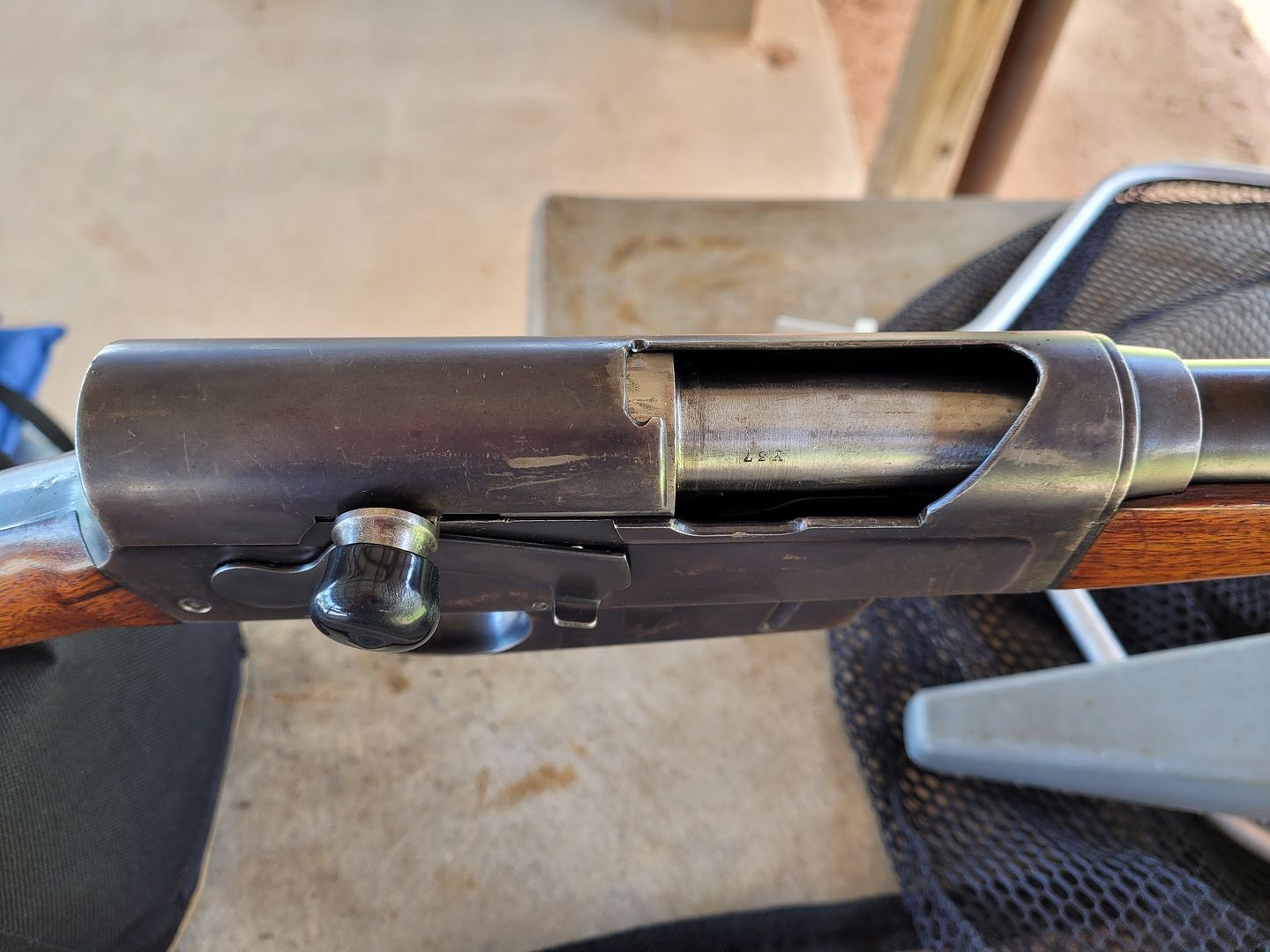
When I pushed at the rear of the barrel extension via the operating handle slot in the receiver, the barrel would return to its normal position in the shroud, ejecting the spent casing.
I tested the long recoil action with the rifle unloaded, by pressing the barrel to the rear with a dowel rod. The barrel and bolt assembly easily traveled to the rear of the receiver, and when I released pressure on the dowel rod, the bolt assembly remained locked to the rear and the barrel recoil spring returned the barrel to its normal position in the shroud.
Since nothing mechanical holds the barrel to the rear during the long recoil cycle, and a minor effort at prying the stuck barrel forward would return it and eject the spent casing, I surmised that the spent casing (which is held rigid in the bolt by the extractor) is apparently "sticking" to the chamber walls and thus holding the barrel to the rear. I tested this theory by applying a thin coating of grease on the case of the next five rounds. Upon firing each of these, the barrel would not stick and would return to battery and eject the spent casing. There are no marks on any of the case bodies suggesting that the chamber is not smooth. Therefore, I can only assume that the wooden "buffer" is not giving a push forward on the barrel at the end of the long-recoil cycle like a compressed steel buffer spring would, and the weak recoil spring itself is not strong enough to pull the barrel away from the bolt assembly and the expanded brass casing "stuck" against the chamber walls.
Your thoughts?
